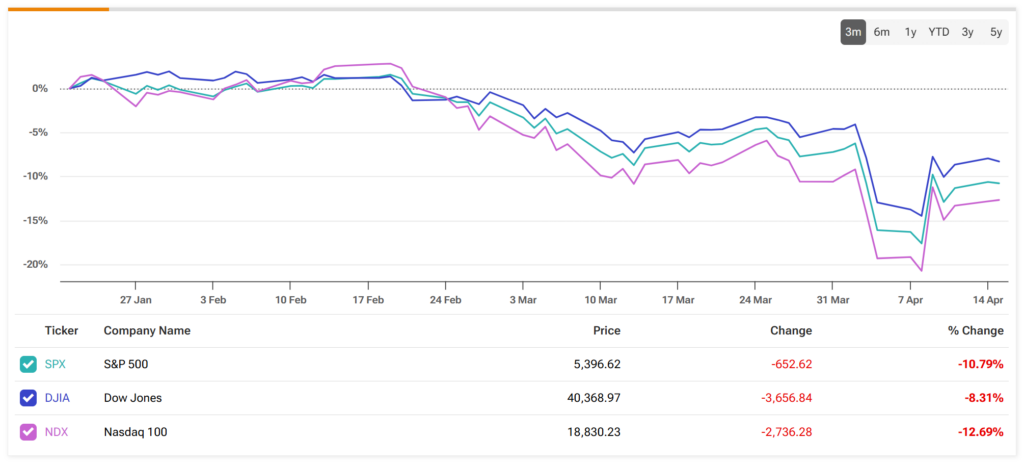Federal Reserve Chair Jerome Powell warned today that President Trump’s recent tariff increases are “significantly larger than anticipated” and could lead to higher inflation and slower economic growth. This creates what Powell called a “challenging scenario” for the Fed’s dual mandate of maintaining price stability while supporting maximum employment.
Powell’s Economic Assessment
Powell noted in his remarks that there is no recent precedent to guide policy decisions in the current environment. He dismissed speculation about a “Fed put” – the idea that the central bank would directly intervene to support falling markets. According to Powell, the current market volatility represents a rational response to policy uncertainty rather than a sign of market dysfunction that would warrant intervention.
Powell indicated the central bank will remain in a wait-and-see mode, holding off on interest rate changes until more economic data emerges. However, he acknowledged a “strong likelihood” that the Fed will fall short of its economic goals for the rest of the year due to these tariffs.
Market Reaction
Markets reacted sharply to Powell’s comments. The Dow Jones Industrial Average fell by roughly 700 points (1.7%), while the S&P 500 dropped by 2.24%. Technology stocks were hit particularly hard, with the Nasdaq Composite sliding over 3%.

The market sell-off deepened after Powell’s speech as investors processed his comments. Many market participants grew increasingly concerned about the prospect of stagflation – the difficult combination of rising inflation with slowing economic growth – and the Fed’s apparent reluctance to intervene in the near term.
Chip manufacturers faced especially steep declines, with Nvidia and AMD among the hardest hit. These losses came in response to Powell’s economic warnings and new export restrictions to China, which affected the semiconductor industry.
Market observers noted that Powell’s message essentially signals there is no safety net for markets, which could mean continued volatility until there is more clarity on trade policy and its economic impacts. The Fed appears committed to waiting for additional economic data before making its next move on interest rates.
Impact on Investor Sentiment
Investors appeared particularly unsettled by Powell’s explicit rejection of a “Fed put.” When directly asked if the Federal Reserve would step in to rescue falling markets, Powell responded with a simple “no,” explaining that while volatility and uncertainty are elevated, markets remain orderly and are functioning as expected.
This stance disappointed investors who had hoped for a more supportive tone from the Fed chair. Instead, Powell’s perceived hawkishness and unwillingness to promise intervention reinforced concerns about persistent inflation and slowing growth. This triggered the equity selloff and a flight to traditional safe havens like gold and U.S. Treasury bonds.
















